The first thing I do is to assist to the two tutorials we have this week. There they show us how to create a composite with a mold and a vacuum bag. We will be using clear epoxi resin and linen fabric.

The first thing I do is to assist to the two tutorials we have this week. There they show us how to create a composite with a mold and a vacuum bag. We will be using clear epoxi resin and linen fabric.
The layers (from the bottom up) are:
1. Mold
2. Fabric saturated in epoxy resin
3. Breathable plastic.
4. White felt
5. Vacuum bag
I use a glass jar as a mold in order to make a lamp for my side table. The process for this type of mold slightly differs from the process that was explained to us as it is not a plain mold and my idea is to completely wrap the mold in the fabric. I cut a long rectangular piece of fabric that would wrap the mold twice. I also cut three circular caps to cover the top of the lamp (no photos for this part of the process).
I cut the plastic to make the vacuum bag and put the tape on the borders. I mix the epoxy elements and saturate the fabric. I then wrap the mold with the epoxy linen fabric and then wrap the whole thing with the rest of the layers. I close the vacuum bag making sure that the tube got to the inner part of the mold (that contained a big volume of air). Once I finish this I create the vacuum and wait for around 15 hours.
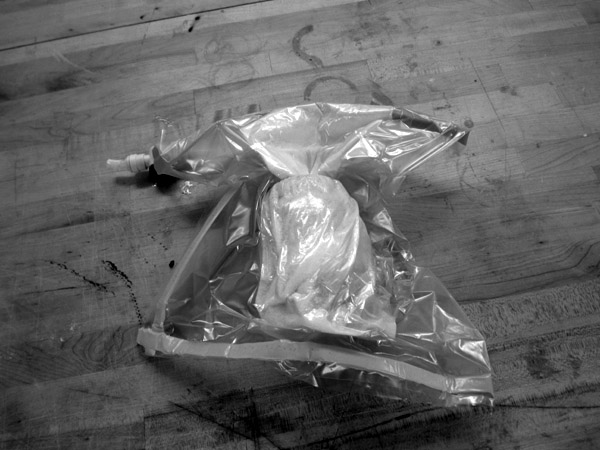
After these 15 hours I open the vacuum bag and try to unmold the composite lamp. As everything is wrapped together it results quite difficult to separate the different parts of the system:
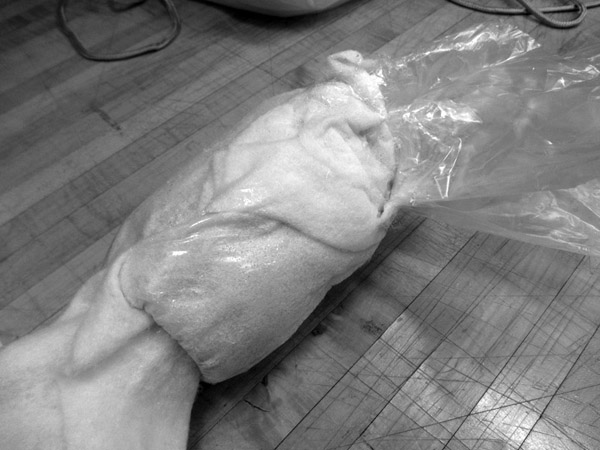
The felt layer had hardened because of the extra epoxy resin so it was not easy to open it. I used some scissors to cut it in order to release the lamp:

Once it is released from the plastic it looks like this:

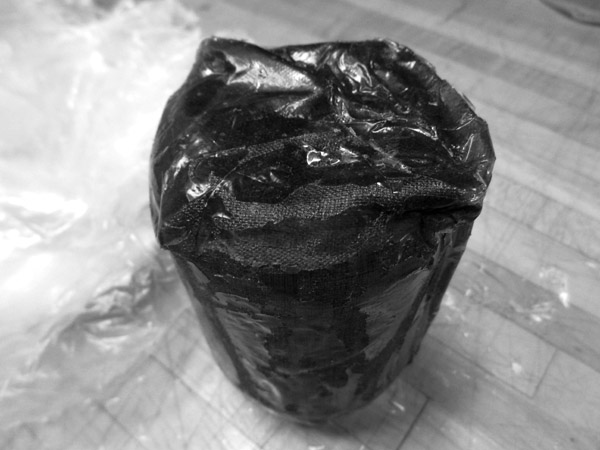
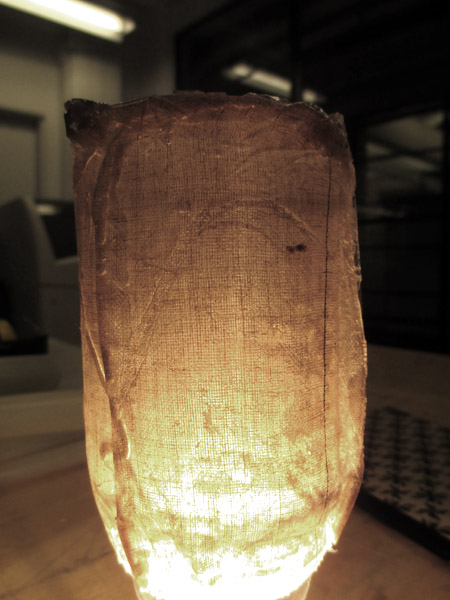
Natural fibers: hemp cord composites. Once I have finished trying the epoxy resin in the linen fabric I will try to experiment with the use of hemp cords with the epoxy resin. I will use two different diameters to test the resistance of each of them. I will do a nest grid with the bigger diameter and a spring with the smaller one.
A. Nest grid structure:
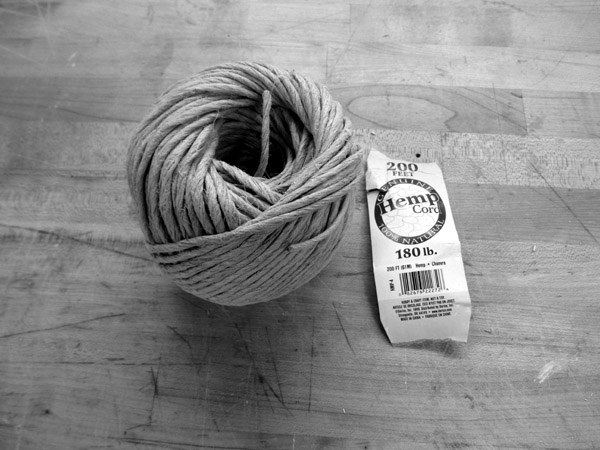
I will use a cardboard box that is left in the FabLab as the formwork for the net:
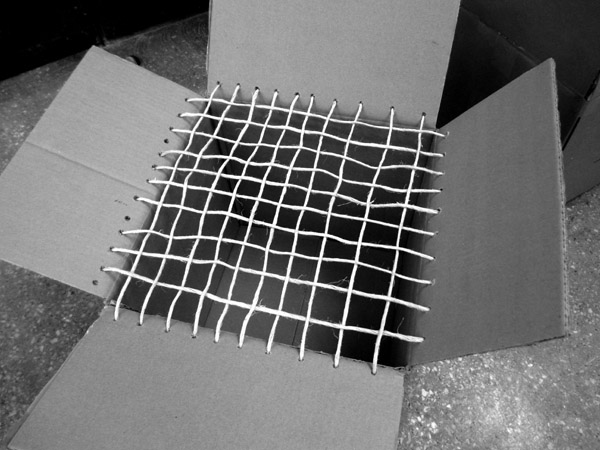
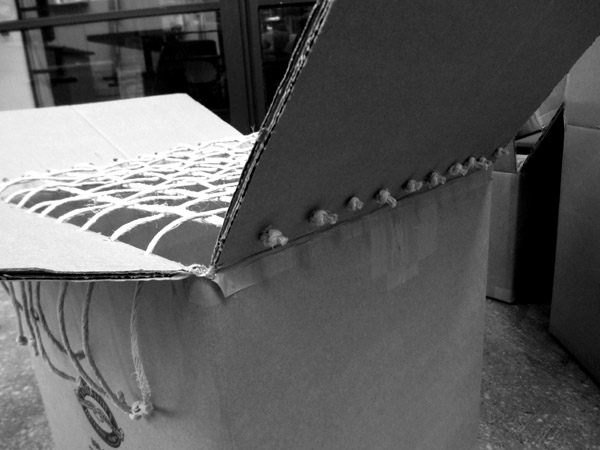
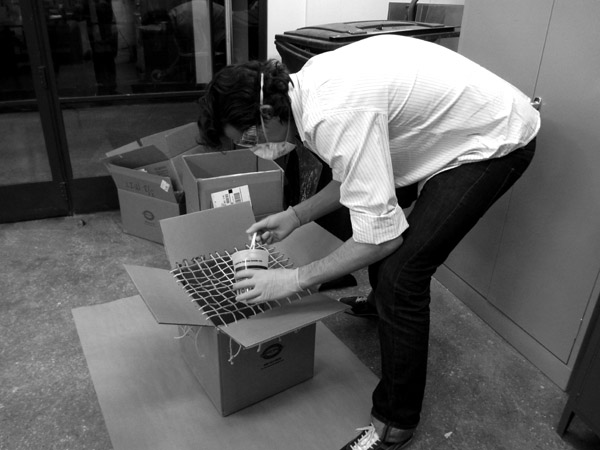
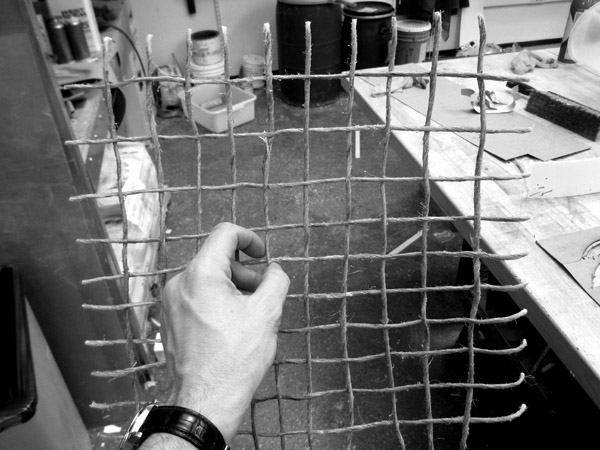
The last step is to test the resistance of the composite nest structure loading it with some books. It works!

B. Hemp cord spring: I will try to make a string out of hemp cord using as a mold one of the plastic recipients we used to mix the epoxy resin (any cylindrical or conical element coul be used to make the spring):
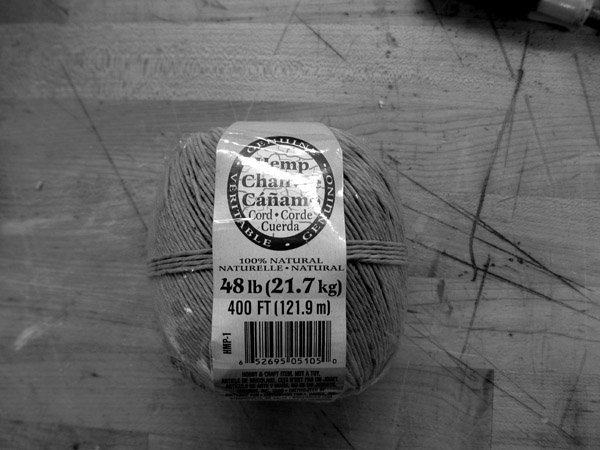
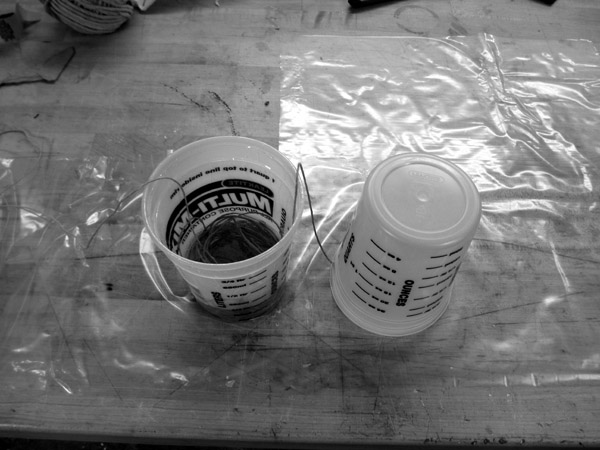
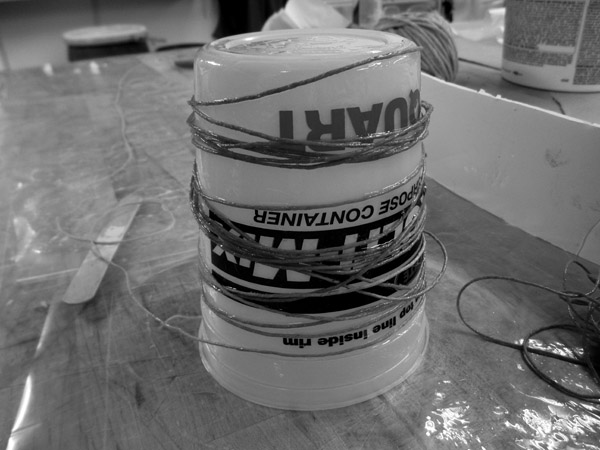
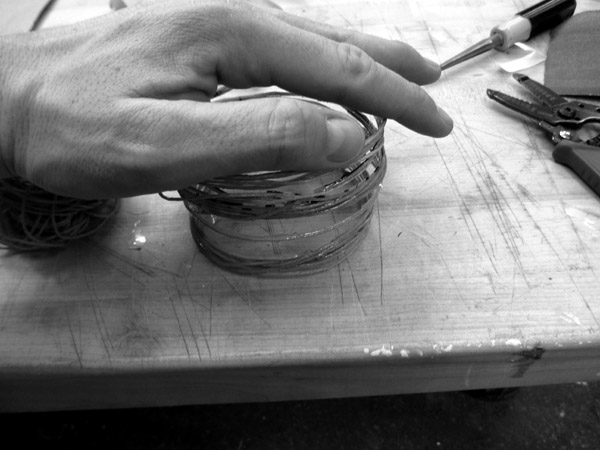
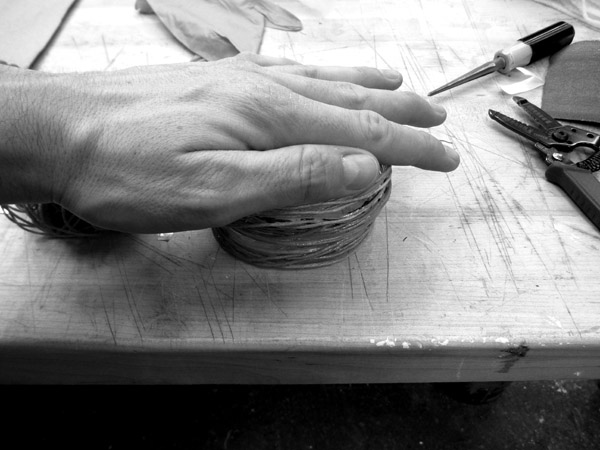
Ignacio Peydro, November 2012.

